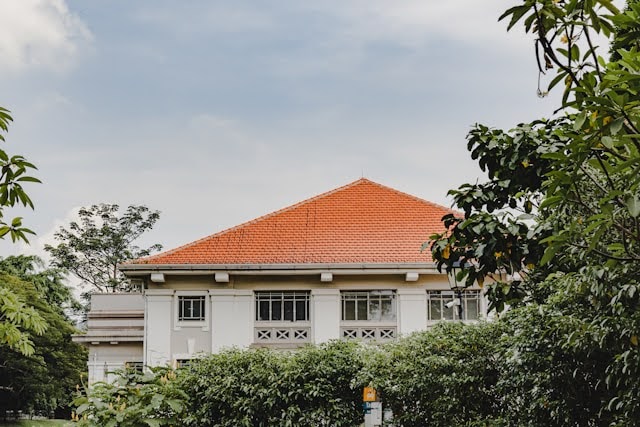The roofing industry has evolved from thatched roofs to advanced technologies. Innovation, environmental consciousness, and a focus on greater efficiency and safety drive today’s rapid progress. This post examines current trends in residential roofing designs and technology, highlighting the industry’s impressive advancements.
Cutting-edge technology introduces adaptive roofing materials that strengthen buildings, aligning with environmental goals. Emerging technologies to monitor include those related to adaptive and responsive materials in the construction sector for a more sustainable environment. Here are some of the latest trends in residential roofing to watch:
3D-Printed Roofs
3D printing is among the most innovative technologies of our time. In roofing, entire roofs and houses can be constructed using 3D printing. This process involves creating various roof components from materials like polymers or concrete. This new roofing method reduces waste, lower costs, improves accuracy, and quicker construction.
Despite its transformative potential, this technology hasn’t become mainstream yet because most building codes have not been updated to accommodate it. Consequently, many roofing contractors do not provide these services, despite their evident benefits.
Drones
Roofers are increasingly incorporating drones into their work. Heavy-lift drones can carry various high-definition cameras and sensors, making them useful for inspections and measurements. A comparable drone-assisted method can generate inspection reports for customers’ homes in just minutes. Veterans contracting use this drone technology to conduct thorough roof inspections to minimize human error. Their new NC location is open for business and is already pioneering drone-assisted roofing services.
Silicone Roofs
Silicone roofing is a favored contemporary choice due to its durability. This method covers the roof with a silicone coating that effectively seals gaps, seams, and cracks, safeguarding your home from weather and environmental elements.
Typically, roofing professionals first use infrared light to detect damp areas beneath the roofing materials. After addressing these issues, they apply the silicone coating. To enhance durability, many homeowners pair silicone roofs with impact-resistant materials. Options like impact-resistant shingles, metal roofing, and concrete or clay tiles protect against severe weather, including high winds, storms, and hail. The silicone layer weather-proofs the roof, while the impact-resistant materials defend against physical damage.
Green Roofs
A green roof is a garden on your rooftop. They’re not only beautiful but also offer numerous benefits. Although there are various methods to construct a green roof, they all share common elements:
- A coating on a sturdy roof structure for support and waterproofing
- An insulating soil layer
- A vegetation layer on top
Beyond its appealing look, a green roof offers multiple advantages. For example, the US Environmental Protection Agency (EPA) notes that green roofs can mitigate heat islands. The plants lower the roof temperature and absorb heat from the air, resulting in substantial energy savings. This is just one of the many advantages.
Solar Panel Shingles
For eco-conscious homeowners, utilizing the unused space on your roof is an excellent step toward energy independence. Photovoltaic shingles offer a modern alternative for those who wish to employ cutting-edge materials without compromising a building’s design aesthetics. These shingles, embedded with solar cells, are installed like regular shingles and come in various styles to complement your home’s look.
While still relatively new, solar panel shingles are expected to become more common soon. While their initial cost might be high for some, they promise long-term savings by generating power without occupying additional roof space.
Self-Healing Roofs
Traditional asphalt shingles offer an appealing and affordable roofing option, but are often susceptible to weather, mildew, and other maintenance challenges. Granule loss, whether from wear or scratches, is particularly damaging, potentially leading to moisture problems, cracking, and UV damage.
Self-healing shingles, made from thermoplastics, can repair minor scratches. The process works as follows: The polymer separates when the sun heats the thermoplastics. As the shingle cools, the molecules in the thermoplastic form new bonds, sealing any damage such as scuffs and scratches. Importantly, this heating and cooling process does not compromise the durability of thermoplastics.
This innovative roofing technology can self-repair from scratches and scuffs without losing its strength. Similarly, roofs with advanced coating technologies resist water and dirt adhesion. The water-repellent coating prevents water accumulation that can cause mildew and ensures dirt is easily washed away by rain, effectively making the roof self-cleaning.
Cool Roofing
The innovation of white or “cool” roofing is driven by a global effort to enhance energy efficiency in response to climate change. Cool roof technology provides greater solar reflectance and thermal emittance than traditional roofing. This leads to more efficient cooling and reduced energy consumption.
Cool roofs can be constructed from naturally cool materials like metal or light-colored shingles, or by applying a solar reflective coating. They can even be designed as green roofs. Roofing business owners, particularly those in sunny regions, should be informed about cool roofing. There might also be government incentives for homeowners and building owners who choose this energy-efficient choice.
Endnote
Adopting these innovations boosts roof performance and durability. It supports a more sustainable and resilient built environment. Staying updated on these trends will be vital for homeowners, builders, and industry professionals as we progress.

Recent Comments